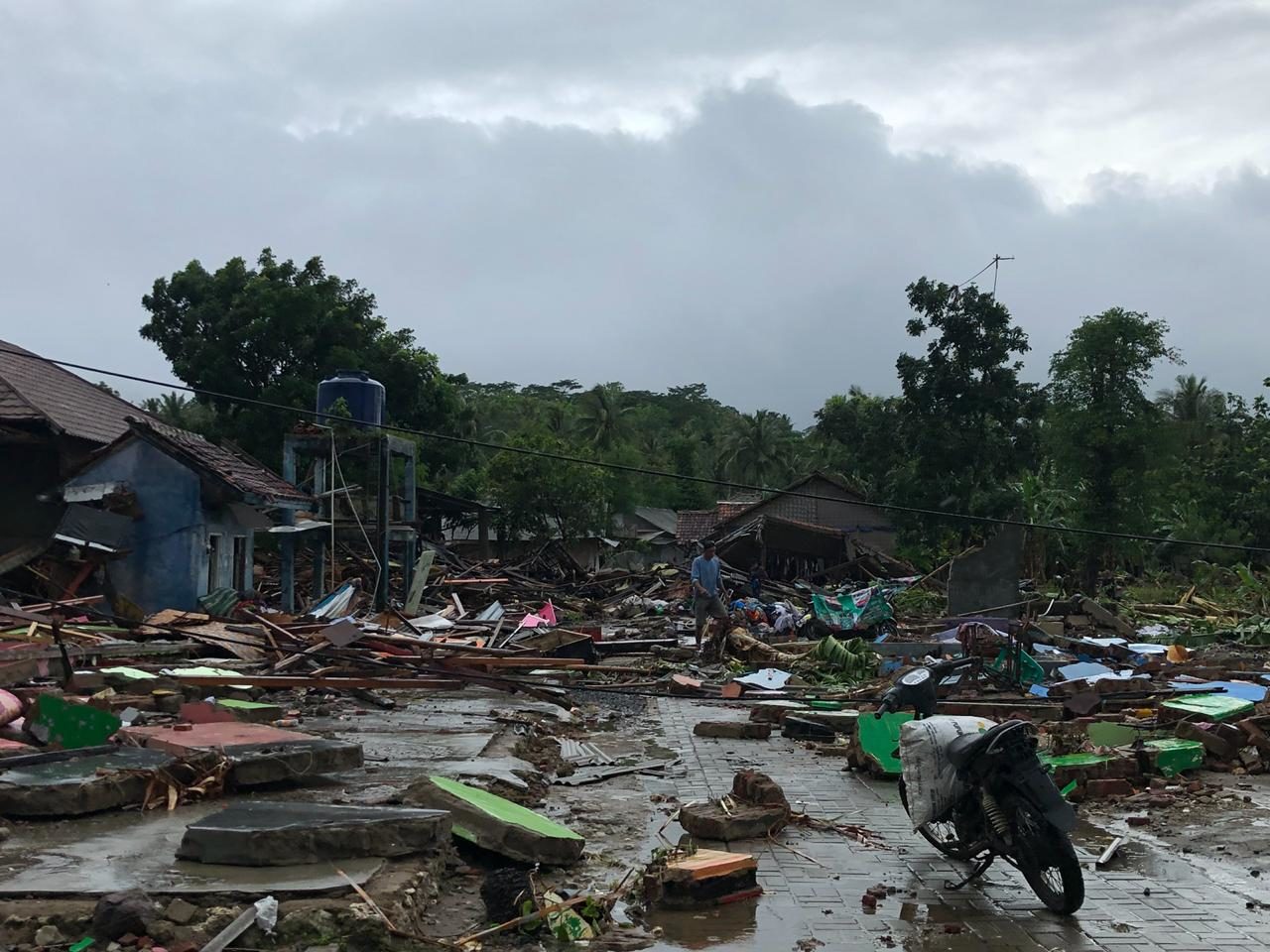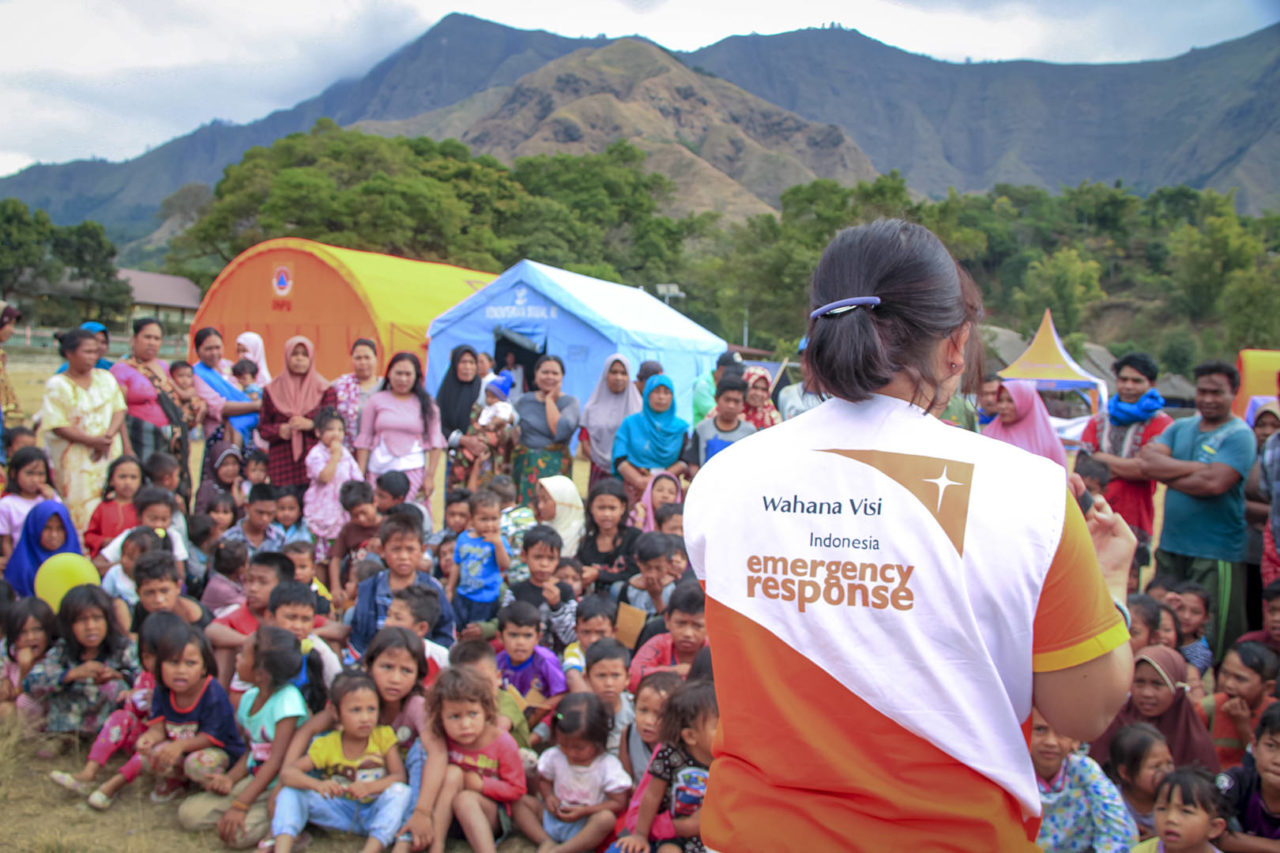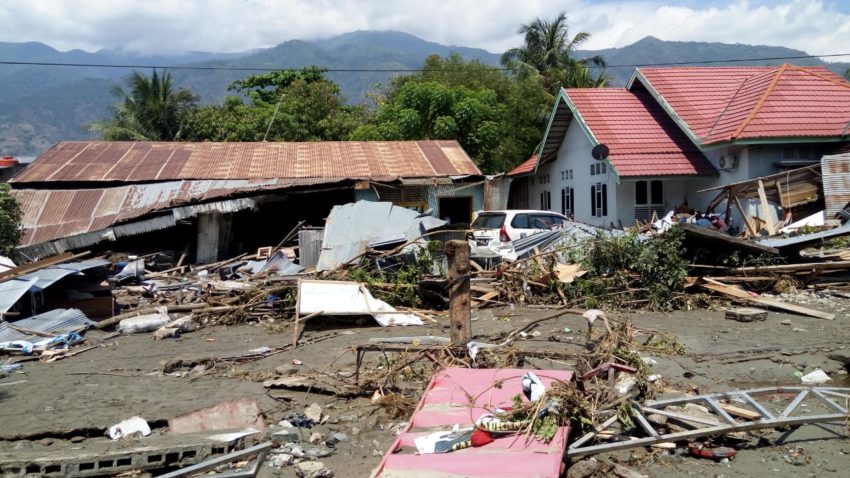In 2018, Indonesia experienced a series of significant earthquakes, including six that measured a magnitude of 6.0 or greater. Aftershocks continued in Central Sulawesi for an extended period, with two notable events in September and December.
On September 28, 2018, a powerful earthquake measuring 7.4 in magnitude struck Indonesia’s central province of Sulawesi. The seismic event was quickly followed by a devastating tsunami, with waves reaching up to six meters. Just a few months later, on December 22, 2018, undersea landslides triggered another tsunami, this time in the Sunda Strait, between Indonesia’s Java and Sumatra islands.
These earthquakes impacted more than 2 million people in the affected regions.
2018 Indonesia earthquakes and tsunamis: Facts, FAQs, and how to help
Explore facts and frequently asked questions about the 2018 Indonesia earthquakes, and learn how you can help children and families affected by disasters.
- Fast facts: 2018 Indonesia earthquakes and tsunami
- Why are there earthquakes in Indonesia?
- What other kinds of disasters occur in Indonesia?
- How were children affected by the 2018 Indonesia earthquakes and tsunamis?
- How did World Vision respond to the Indonesia earthquakes and tsunamis?
- How can I help children and families in Indonesia?
Fast facts: 2018 Indonesia earthquakes and tsunamis
- Earthquakes greater than magnitude 6 occur nearly every year in Indonesia.
- In 2018, Indonesia experienced nine powerful earthquakes, with six of them measuring magnitude 6.0 or greater.
- On September 28, 2018, a powerful 7.4 magnitude earthquake struck the central province of Sulawesi, Indonesia, triggering a destructive tsunami with waves reaching approximately 20 feet in height.
- On December 22, 2018, undersea landslides triggered another tsunami in the Sunda Strait between Indonesia’s Java and Sumatra islands.
- These seismic events collectively affected over 2 million people in the impacted areas.
Why are there earthquakes in Indonesia?
Indonesia, an archipelago composed of thousands of volcanic islands, faces a high frequency of earthquakes due to its unique geological setting. The Southeast Asian country is located on the Pacific Ring of Fire, where slabs of the earth’s crust — tectonic plates — clash, creating earthquakes when the plates shove against one another. About 90% of earthquakes occur along the Ring of Fire.
Among the most deadly earthquakes in history was the magnitude 9.1 quake that struck off the west coast of the Indonesian island of Sumatra on December 26, 2004, triggering a massive tsunami. This disaster killed nearly 230,000 people in multiple countries.
What other kinds of disasters occur in Indonesia?
In addition to earthquakes, tsunamis, and volcanoes associated with the Ring of Fire, Indonesia is prone to droughts and floods. Java and Sumatra, the southern and western islands, continue to experience a wide variety of natural hazards. On the other islands, droughts and floods are the most frequent. In inland areas with steep terrain, heavy rains cause not only flooding but also landslides.

How were children affected by the 2018 Indonesia earthquakes and tsunamis?
Children who experienced the 2018 Indonesia earthquakes and tsunami faced significant losses. Many lost family members, friends, homes, and cherished belongings. In response, the Indonesian government and humanitarian organizations like World Vision worked together to ensure the safety of the affected children and to prevent them from falling victim to trafficking and exploitation.
Like the adults caring for them, children needed shelter, access to clean water and sanitation, and medical care. They also needed support to regain a sense of normalcy in their lives, including opportunities to play, access to quality education, and a sense of security. In Central Sulawesi, an estimated 460,000 children across four districts were impacted.
One example was that of 10-year-old Olivia. She recounted her experience at a World Vision Child-Friendly Space, sharing that “the earthquake has destroyed and swallowed up our home.” When the powerful earthquake hit, Olivia was attending a village soccer game with her family. Amid the chaos, her father grabbed her hand, and together they ran to the top of a hill as the ground moved and people cried out. Olivia’s family found shelter under a tarpaulin cover at an evacuation center. Her school books and uniform were lost, and her only clothes left were the ones she wore that day. However, what saddened her most was the loss of her beloved doll.

How did World Vision respond to the Indonesia earthquakes and tsunamis?
World Vision has been actively serving vulnerable communities in Indonesia since 1960. We focus on improving the lives of children through long-term development programs that emphasize health, education, livelihoods, water and sanitation, and disaster risk reduction. World Vision has also responded to disasters in Indonesia, including the 2004 Indian Ocean tsunami.
Soon after the devastating earthquakes in 2018, our local team at Wahana Visi, a locally-registered partner of World Vision, immediately initiated relief efforts. This involved the distribution of pre-positioned emergency supplies like family household items, shelter kits, and hygiene supplies. Our Indonesian staff, many of whom had experienced losses themselves in the earthquake, stepped up to serve their own people. We set up a feeding center in World Vision’s office compound in Palu City, Central Sulawesi, to help mothers care for and feed their children.
In Central Sulawesi, we supported thousands of people with clean water and hygiene, food assistance, and household items including blankets and solar lanterns. We also provided Child-Friendly Spaces where children could play. Additionally, World Vision worked to restore education opportunities by repairing and equipping schools and providing training in disaster risk reduction.
In response to the December 22, 2018, Sunda Strait tsunami, World Vision distributed hygiene and household items to families who had lost their homes. We also offered mothers and families safe places to feed their infants and young children, as well as Child-Friendly Spaces. We reached 15,000 people through programming that included restoring access to clean water, sanitation, shelter, livelihoods, and education.
How can I help children and families in Indonesia?
- Pray: Lift up children and families as they recover and rebuild after disasters.
- Give: Your gift will help provide care to children and families affected by disasters.
Heather Klinger, Kristy J. O’Hara-Glaspie, and Sevil Omer of World Vision’s staff in the U.S. contributed to this article.



